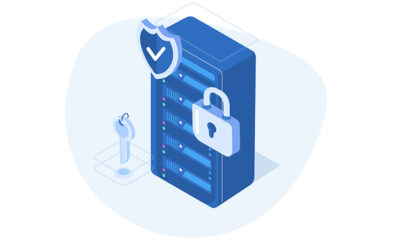Anyone still using a desktop computer as their first point of contact for event marketing is making a big mistake. But are (native) event apps the answer? Let’s take a closer look.
The percentage of desktop visitors for websites is steadily decreasing. Many organizers are therefore concerned about the impact of the increased proportion of mobile visitors in relation to the marketing of their events.
This trend has been taken into account in website development for years: first with responsive web design and the goal of optimally displaying content on as many devices as possible. Later, the focus was on mobile first, which means that the design prioritized is not that for desktop use, but rather that for mobile use. And that makes a lot of sense, as these trends show:
Mobile trends
1. Google search
Over 60% of search queries online are now coming from mobile devices. This prompted Google, the operator of the largest Internet search engine, to make “mobile friendliness” a ranking factor and then make the mobile index its primary index in 2016.
2. Mobile-only is growing
In the US, 25% of mobile Internet users are “mobile-only”, meaning they no longer use a desktop computer. This trend is clearly growing.
3. Mobile devices continue to diversify further
Trends such as the Internet of Things (IoT), voice control (Alexa etc.) and wearables (e.g. smartwatches) are contributing to a boom in the number and type of mobile devices. Can the function of an app be broken down in such a way that it also works on a smartwatch? Is it possible to book an event ticket via Alexa? The requirements for flexible design are increasing.
What does this mean for the event experience?
An organizer aware of this development is forced to act. Before an event takes place in the real world, your participants will already be gaining various impressions from different sources: social media, the event website, newsletters, print materials, posts on partner websites.
Things get serious when participants of your event want to get information, register and interact with your content via the event website, whether mobile or via desktop. It is here that the decision is made whether the “user experience” can contribute to the success of the event.
- How easy is it to sign up and pay?
- Is all the necessary information easy to understand and accessible without any barriers?
- How intuitive is the navigation?
- How long are the loading times during the registration process?
- Can payment and ticketing also possible be done on smartphones?
- Can I already interact with other participants and prepare for my visit?
The “big picture” that your participants gain about your event is composed of these results.
The obvious solution would seem to be an event app that is specifically geared towards mobile users, right? Ok, so we hire an agency that develops an “event app” or use the numerous event app providers that the German and international market offers.
But what exactly is an event app? What exactly should it be able to do?
Why native event apps are not the answer
An exact definition of the term appears to be crucial, as it often omits the word native. A native event app is a solution that is made available in the relevant stores (Android, IOS). Features such as registration, event info, event schedule, speaker and sponsor info, live polls and surveys are often part of these solutions.
At this early stage of the process, event planners already get a bad feeling. First of all, I try to convince the target group to participate in my event with the help of various marketing measures and to bind them with the help of good content. And then I have to “send them away” to a store again? And force them to install “my” app? And then to again find the installed event app on their smartphone among their many other apps? And then to actively use the event app?
So, I send my participants to a silo (App Store), where I once again have to provide all the content that already took me so much effort to present on my website? Does that really make sense?
There are estimates that with each additional step a participant needs to take in order to install and use an event app, about 25% of the audience will leave. i.e.
- Target group event participants: 100 %
- Sent to the store: loss 25%, remainder 75%
- Event app installed: loss 25%, remainder 50 %
- Proportion of users actively using the native app: loss 25%, remainder 25 %
There are 2.2 million different apps in the iOS App Store alone and 2.7 million in the Google Play Store. In fact, the average app user spends 77% of their time on the top 3 apps. These are usually from the areas of games, social media, messaging, maybe also finance.
A native event app can never win among such competition – with its very special benefit, which is reduced to the period before, during and perhaps just after an event, i.e. a few weeks. And it gets worse.
Long waiting times
Before event apps can be downloaded by visitors in the Apple App Store or Google Play Store, they go through what is called a review process. The app is checked for content and functionality, which can take anything from several days to a few weeks. In the worst case, submissions can also be rejected if certain content does not comply with the guidelines of the respective App store.
Restrictions on corporate smartphones
Many companies provide their employees with smartphones that frequently have individual software settings. So it is not uncommon for these phones not to allow for additional app to be installed for security reasons. In these cases, the user could not install an event app from the App store and was therefore prevented from using it.
Platform confusion
Event apps have to serve multiple platforms to be able to reach as many users as possible. An app for the Google Play Store on Android, an app for the App Store for iPhones, and to really reach all users, you would have to provide an app for Windows Mobile or Blackberry, too.
But wait a minute, what about any advantages of using native event apps?
Pro argument: Push notifications.
So-called push notifications are special messages displayed directly on the user’s mobile device. This means that you do not have to first open the event app, but you have access to this information with one glance at your device.
Push functionalities are available in both native and web apps. However, Apple with the iOS operating system does not allow web-based pushing on the Safari browser (yet) – that would be an argument for a native event app. However, about 75% of mobile operating systems worldwide are Android-based, the rest is mostly iOS-based.
In addition, users can unsubscribe from push notifications and they therefore do not guarantee reliable delivery. Participants or groups of participants can also be notified of important updates with notifications displayed in the web app.
Pro argument: Offline use
Years ago, the possibility of being able to use the event app offline was the strongest argument for a native event app. More static content such as the event program could be read even if no internet connection was available. By now, however, that is no longer an argument since web-based event apps have a (limited) possibility of storing data on the local device. This would mean that this information would also be available offline.
Native vs. web app
Considering the poor usage rates of native event apps and the other drawbacks, a native event app can be a real threat to event planners when they working based on wrong assumptions, fall for false promises, and “rely” on native apps.
Mobile Experience and the Converve platform
One of the core features of the Converve platform is facilitating and organizing matchmaking and networking among participants for your event. Our data-driven referral tool helps attendees find the most valuable contacts and exciting content at your event.

Mobile Event Experience – made by Converve
It goes without saying that this is most easily done via the device that your participants always carry with them: their smartphone. Our platform is therefore consistently designed for mobile use. All its key features are easily and intuitively available on mobile for event participants. They can conveniently make appointments, even during the journey e.g. on the train.
At any given time, exhibitors can follow how many and which meeting requests are made through their interface. Organizers can keep track of key KPIs directly from their smartphones.
And all this without the complicated download of a native event app, but quite simply via the mobile browser of their smartphones!
We are constantly developing our mobile solutions, so that users no longer have to worry about which device they use our solution on. That is both the logical and right way for us.
Summary
There are many arguments in favor of communicating with your event participants based on the mobile first principle. Having said that, native event apps do more harm than good.
At Converve, we rely on easy availability of all the information and core features (contact management, event website, registration & payment, agenda management, networking, matchmaking and reporting) via mobile-optimized, fast-loading and user-friendly solutions.



